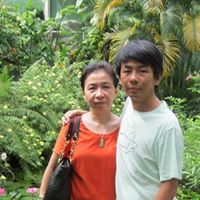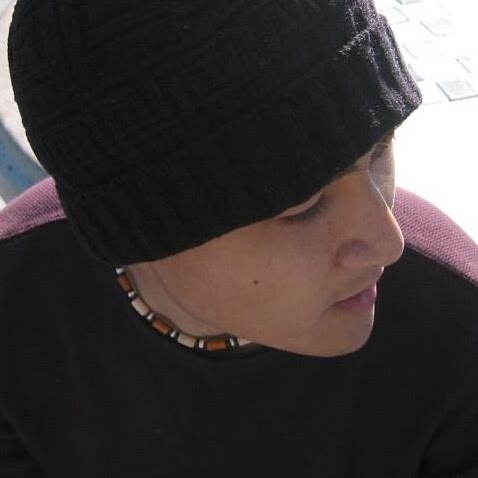Bin Yu
age ~60
from Morgan Hill, CA
- Also known as:
-
- Bin Pan
- Yu Bin
- Phone and address:
- 19141 Saffron Dr, Morgan Hill, CA 95037
Bin Yu Phones & Addresses
- 19141 Saffron Dr, Morgan Hill, CA 95037
- Riverside, CA
- San Jose, CA
Name / Title
Company / Classification
Phones & Addresses
President
DIVINEV, INC
3472 Chemin De Riviere, San Jose, CA 95148
President
PROTEK SYSTEMS CORP
19141 Saffron Dr, Morgan Hill, CA 95037
President
AB CAD
Computer Systems Design · Hardware Merchant Wholesalers
Computer Systems Design · Hardware Merchant Wholesalers
840 Hinckley Rd STE 126, Burlingame, CA 94010
1605 Hunt Dr, Burlingame, CA 94010
650 259-9169
1605 Hunt Dr, Burlingame, CA 94010
650 259-9169
Isbn (Books And Publications)
-
Mao'S Generals Remember Korea
view source -
Author:Bin Yu
-
ISBN #:0700610952
Us Patents
-
Hard Mask For Integrated Circuit Fabrication
view source -
US Patent:6339017, Jan 15, 2002
-
Filed:Jun 20, 2000
-
Appl. No.:09/596993
-
Inventors:Bin Yu - Sunnyvale CA
-
Assignee:Advanced Micro Devices, Inc. - Sunnyvale CA
-
International Classification:H01L 214763
-
US Classification:438585, 438584, 438197, 438595
-
Abstract:A method of manufacturing small structures or narrow structures on an ultra-large scale integrated circuit utilizes a hard mask. A mask layer can be deposited over a top surface of a material above a semiconductor substrate. A mask layer can be lithographically patterned to have a feature. The side walls of the feature can be oxidized. The oxidized side walls can be removed to reduce the size of the feature below one lithographic feature. The material underneath mask layer can be etched in accordance with the feature without the oxidized side walls.
-
Fabrication Of A Field Effect Transistor With Three Sided Gate Structure On Semiconductor On Insulator
view source -
US Patent:6342410, Jan 29, 2002
-
Filed:Jul 10, 2000
-
Appl. No.:09/612781
-
Inventors:Bin Yu - Sunnyvale CA
-
Assignee:Advanced Micro Devices, Inc. - Sunnyvale CA
-
International Classification:H01L 2184
-
US Classification:438164
-
Abstract:For fabricating a field effect transistor, a semiconductor pillar is formed on a layer of insulating material with a top surface and first and second side surfaces of the semiconductor pillar being exposed. A layer of dielectric material is formed on the top surface and the first and second side surfaces of the semiconductor pillar. A layer of conductive material is deposited on the layer of dielectric material on the top surface and the first and second side surfaces of the semiconductor pillar. A dummy dielectric structure is formed that covers a portion of the layer of conductive material such that a remaining portion of the layer of conductive material on the semiconductor pillar is exposed. The dummy dielectric structure has a predetermined sidewall on the layer of conductive material on the semiconductor pillar. A layer of hardmask dielectric is deposited on top and on the predetermined sidewall of the dummy dielectric structure and on the remaining portion of the layer of conductive material that is exposed.
-
Method Of Manufacturing A Dual Doped Cmos Gate
view source -
US Patent:6342438, Jan 29, 2002
-
Filed:Nov 6, 1998
-
Appl. No.:09/187379
-
Inventors:Bin Yu - Fremont CA
Ming-Ren Lin - Cupertino CA -
Assignee:Advanced Micro Devices, Inc. - Sunnyvale CA
-
International Classification:H01L 21265
-
US Classification:438520, 438528, 438546
-
Abstract:A dual doped CMOS gate structure utilizes a nitrogen implant to suppress dopant inter-diffusion. The nitrogen implant is provided above standard trench isolation structures. Alternatively, an oxygen implant can be utilized. The use of the implant allows an increase in packing density for ultra-large-scale integrated (ULSI) circuits. The doping for N-channel and P-channel active regions can be completed when the polysilicon gate structures are doped.
-
Field Effect Transistor With Electrically Induced Drain And Source Extensions
view source -
US Patent:6348387, Feb 19, 2002
-
Filed:Jul 10, 2000
-
Appl. No.:09/612771
-
Inventors:Bin Yu - Sunnyvale CA
-
Assignee:Advanced Micro Devices, Inc. - Sunnyvale CA
-
International Classification:H01L 21336
-
US Classification:438303, 257389
-
Abstract:For fabricating a field effect transistor within an active device area of a semiconductor substrate, a gate dielectric is formed on the active device area of the semiconductor substrate, and a gate structure is formed on the gate dielectric with the gate structure being comprised of a first conductive material. A drain spacer comprised of a second conductive material is formed on a first sidewall of the gate structure, and a first liner dielectric is formed between the drain spacer and the first sidewall of the gate structure and between the drain spacer and the semiconductor substrate. A source spacer comprised of the second conductive material is formed on a second sidewall of the gate structure, and a second liner dielectric is formed between the source spacer and the second sidewall of the gate structure and between the source spacer and the semiconductor substrate. Application of at least a drain threshold voltage on the drain spacer with respect to the semiconductor substrate induces charge accumulation in the semiconductor substrate under the first liner dielectric to form a drain extension of the field effect transistor. Similarly, application of at least a source threshold voltage on the source spacer with respect to the semiconductor substrate induces charge accumulation in the semiconductor substrate under the second liner dielectric to form a source extension of the field effect transistor.
-
Laser Annealing For Forming Shallow Source/Drain Extension For Mos Transistor
view source -
US Patent:6355543, Mar 12, 2002
-
Filed:Sep 29, 1998
-
Appl. No.:09/162919
-
Inventors:Bin Yu - Fremont CA
-
Assignee:Advanced Micro Devices, Inc. - Sunnyvale CA
-
International Classification:H01L 21336
-
US Classification:438535, 438303, 438308, 438528
-
Abstract:A method for making a ULSI MOSFET chip includes forming a transistor gate on a substrate and defining the contours of shallow source/drain extensions by implanting a first pre-amorphization (PAI) substance into the substrate. A sidewall spacer is then formed on the substrate next to the gate, and a second PAI substance is implanted into the substrate to defame the contours of a deep source/drain junction. Then, a dopant is provided on the surface of the substrate, and the portions of the substrate that contain PAI substances are silicidized to render the portions relatively more absorbing of laser energy. These pre-amorphized portions are then annealed by laser to melt only the pre-amorphized portions. During melting, the dopant is driven from the surface of the substrate into the pre-amorphized portions to thereby establish source/drain regions below the gate.
-
Dual Amorphization Process Optimized To Reduce Gate Line Over-Melt
view source -
US Patent:6361874, Mar 26, 2002
-
Filed:Jun 20, 2000
-
Appl. No.:09/597623
-
Inventors:Bin Yu - Sunnyvale CA
-
Assignee:Advanced Micro Devices, Inc. - Sunnyvale CA
-
International Classification:H01L 21336
-
US Classification:428514, 438527, 438299, 438301, 438303, 438307
-
Abstract:A method of fabricating an integrated circuit with ultra-shallow source/drain junctions utilizes a dual amorphization technique. The technique creates a shallow amorphous region and a deep amorphous region 300 nm thick. The shallow amorphous region can be between 10-15 nm below the top surface of the substrate, and the deep amorphous region can be between 150-200 nm below the top surface of the substrate. The process can reduce gate over-melting effects. The process can be utilized for P-channel or N-channel metal oxide semiconductor field effect transistors (MOSFETs).
-
Method Of Gate Doping By Ion Implantation
view source -
US Patent:6362055, Mar 26, 2002
-
Filed:Aug 31, 1998
-
Appl. No.:09/144527
-
Inventors:Ming-Ren Lin - Cupertino CA
Bin Yu - Cupertino CA -
Assignee:Advanced Micro Devices, Inc. - Sunnyvale CA
-
International Classification:H01L 218234
-
US Classification:438275, 438527, 438529, 438283
-
Abstract:A semiconductor device includes a first gate stack and a second gate stack, each gate stack corresponding to a gate of a FET formed on the semiconductor device. The first gate stack includes a gate material formed from one of poly-silicon, poly-SiGe, and amorphous silicon. The gate material is implanted with a dopant of a first conductivity type at a first concentration. A metal silicide layer is formed over the doped gate material. The second gate stack includes a gate material formed from one of poly-silicon, poly-SiâGe, and amorphous silicon. The gate material of the second gate stack is implanted with a dopant of a second conductivity type at a second concentration.
-
Field Effect Transistor Formed In Soi Technology With Semiconductor Material Having Multiple Thicknesses
view source -
US Patent:6365445, Apr 2, 2002
-
Filed:May 1, 2001
-
Appl. No.:09/846957
-
Inventors:Bin Yu - Sunnyvale CA
-
Assignee:Advanced Micro Devices, Inc. - Sunnyvale CA
-
International Classification:H01L 2184
-
US Classification:438149, 438151, 438163, 438164, 257347, 257353
-
Abstract:For fabricating a field effect transistor on a buried insulating material in SOI (semiconductor on insulator) technology, a dielectric island is formed on the buried insulating material. An opening is etched through the buried insulating material at a location away from the dielectric island. An amorphous semiconductor material is deposited to fill the opening through the buried insulating material and to surround the dielectric island. The amorphous semiconductor material is polished until the top surface of the dielectric island is exposed and such that the amorphous semiconductor material surrounds the dielectric island. A layer of the amorphous semiconductor material is deposited on top of the dielectric island and on top of the amorphous semiconductor material surrounding the dielectric island. The amorphous semiconductor material surrounding the dielectric island and the layer of the amorphous semiconductor material are recrystallized to form a substantially single crystal structure of semiconductor material. A gate dielectric and a gate electrode of the field effect transistor are formed on top of a thinner portion of the semiconductor material disposed on the dielectric island.
Youtube
Flickr
Myspace

Yu Bin
view source
Bin Yu
view source
Bin Yu
view source
Bin Yu
view source
Bin Yu
view source
Bin Yu
view source
Bin Yu
view source
Bin Yu
view sourceGoogleplus

Bin Yu
Education:
University of Wisconsin-Madison - Electrical Engineering

Bin Yu

Bin Yu
About:
Custom Manufacturing Services of the Precision Components industry located in Ningbo, China. Our services include Machine Parts, CNC Machining Parts, CNC Machine Parts, Stainless Steel Parts, CNC Prec...
Tagline:
Precision Components, CNC Machining Parts, CNC Precision Turned Parts

Bin Yu
About:
Do i know you?

Bin Yu

Bin Yu

Bin Yu

Bin Yu
Get Report for Bin Yu from Morgan Hill, CA, age ~60
![[World Championship 2010 XD FINAL] Zheng Bo/Ma Jin... [World Championship 2010 XD FINAL] Zheng Bo/Ma Jin...](https://i.ytimg.com/vi/HDbTRXqNUa0/0.jpg)
![[World Championship 2010 XD FINAL] Zheng Bo/Ma Jin... [World Championship 2010 XD FINAL] Zheng Bo/Ma Jin...](https://i.ytimg.com/vi/37Qd7ScnFYU/0.jpg)


![[World Championship 2010 XD FINAL] Zheng Bo/Ma Jin... [World Championship 2010 XD FINAL] Zheng Bo/Ma Jin...](https://i.ytimg.com/vi/AW02jEggqoc/0.jpg)









